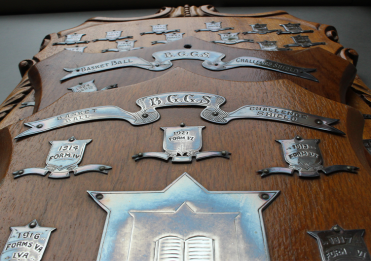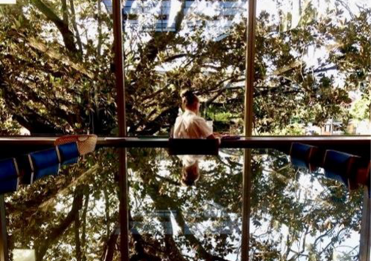Long sleeves or short, baggy or streamlined, loose or tight, the Grammar blouse has experienced a range of designs in our history. However, despite these iterations and changes in fashion, this item of clothing is the most consistent element of the Girls Grammar uniform since its inception in 1923. What was its evolution? When did the blouse become a part of a uniform? Who and what were the motivators for the implementation of a uniform? What were the changes in style across the years?
One item in the School archive opens the door to exploring these questions. It is a gift from the Parents and Friends Uniform Shop: a uniform kit for home sewers to create their own Girls Grammar uniform. The package included cut-out pieces of white material to make up the School blouse and a large piece of navy-blue material from which to make a school skirt. The white school blouse has been partially sewn together. It also included material to make blouse and skirt pockets, some reinforcing tape, and a navy-blue button taped onto a piece of white card with KELVIN GROVE CLOTHING AUSTRALIA. Accompanying the parcel is a note which reads: BRISBANE GIRLS GRAMMAR SCHOOL UNIFORM – BLOUSE AND SKIRT 14 …
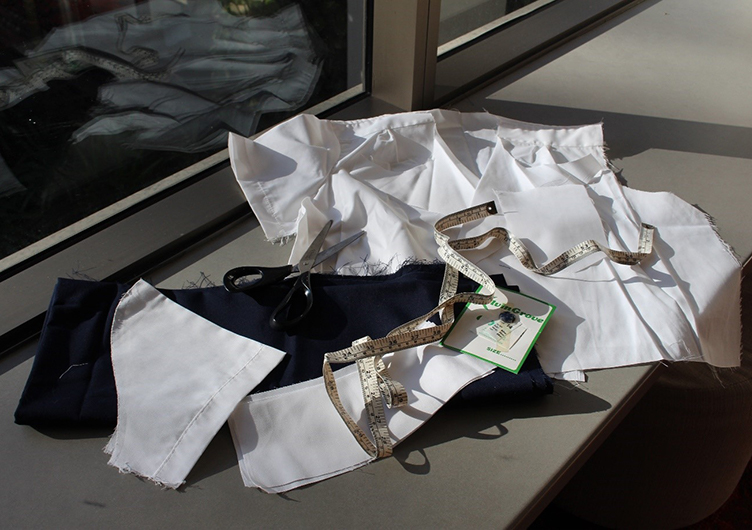
1980 Uniform Kit
The Grammar uniform has remained remarkably unchanged for decades so, from where did the original ideas originate? Grammar girls attended school in the 19th century in a fashionable and eclectic range of blouses with pintucks, lace, high collars, button cuffs, and a variety of sleeve lengths, usually homemade and often handsewn, rather than store-bought. This diverse assortment of styles continued into the 20th century when girls wore styles in which they were comfortable, what was fashionable at the time, and what they had in their wardrobes.
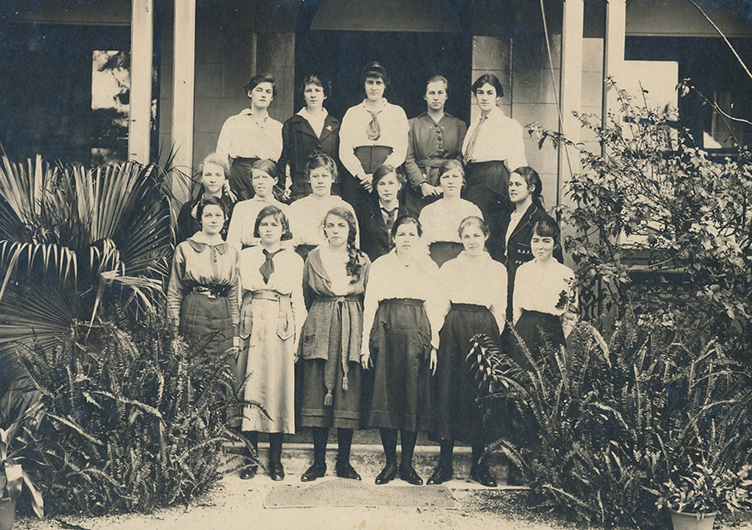
1917 VI and V Form
It was not until 1922 that the concept of a uniform was discussed because a group of girls wanted to present a united front at a sporting event. Marjorie Puregger, nee Bulcock (1923), reminisces that it was interschool rivalry and not the urging of staff or parents which motivated the very sporty 1922 Vth Form to suggest a School uniform to be worn at the prestigious swimming event, the Brockway Cup. This would present a united front to its main rivals, Somerville House. Marjorie ‘Babe’ Elliott was one of the 1922 VIth Form students who supported this concept of a uniform. It’s no wonder she was such a stickler for uniforms worn properly when she returned as a teacher in 1930 and throughout her years on the staff until she retired in 1971.
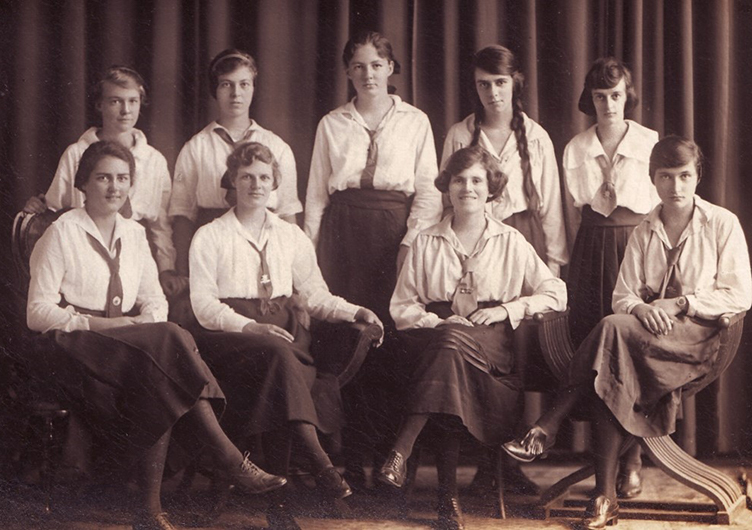
1922 VI Form with Marjorie Elliott back row left
In 1923, the School Magazine Editorial stated that ‘(d)uring the first term, a committee of delegates from every form was appointed to discuss the question of a School uniform. A chairman and secretary were elected, motions proposed, seconded, and put to the vote, and minutes kept, in a business-like manner. Many wise proposals have been passed to arrange for every detail of the School uniform and we should like to take this opportunity of reminding the School that all new School clothes are supposed to be uniform.’

Left image: 1930 Catherine and Polly Elston Right image: Mavis Cullen (1930)
During the 1930s and 40s, it appears that the only variation of the white blouse was it could be long or short-sleeved. However, as many blouses were homemade, variations were evident and expected. It appears that the long-sleeved blouse was phased out from 1940. The consistent design features from those times were the collar and the waistband, and the constant awareness of modesty.
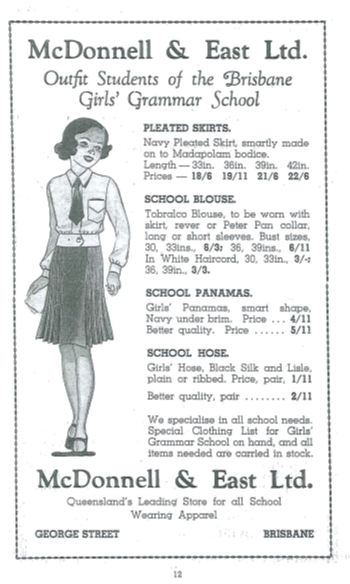
1938 School Magazine p12
Johnette Thompson, nee Zillman (1954), remembers ‘my mother had a prospectus and followed it to the letter. It proved to be very much out of date. She sewed several camisoles for me and they were not being worn anymore.’ The camisole was designed to go under the blouse and button onto the skirt so that when a girl raised her arm, no skin would show. The protection of modesty extended into the late 1960s when there were regular inspections to ensure a singlet or camisole would be worn under the blouse so, when ‘strap-hanging’ in the tram or bus, no skin was evident!

Johnette Zillman’s 1950 camisole

Johnette Zillman’s 1950 camisole (detail) Note the buttonholes
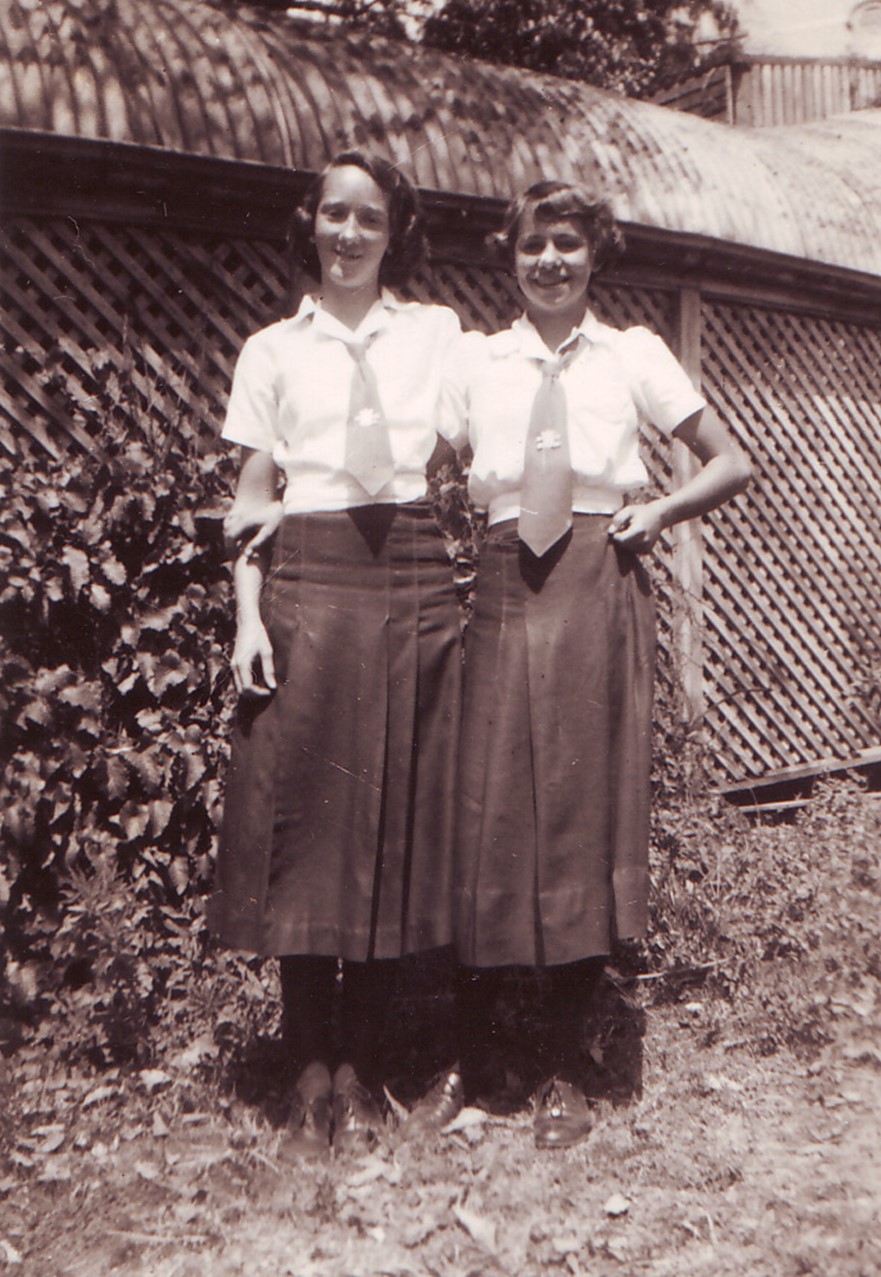
1953 Nola Welch and Marilyn Huxley
Across the 1950s and 60s the blouses became shorter and more fitted, which is illustrated by the sweet 1953 Box Brownie snap of Nola Welch (1955), and friend, Marilyn Huxley (1955), and in Christine Purvis’s (1965) uniform prospectus dated 1958, clearly picturing a short sleeve blouse. The 1970s saw shorter skirts, long socks, and longer, looser blouses in preparation for the big hair and big shoulders of 1980s.
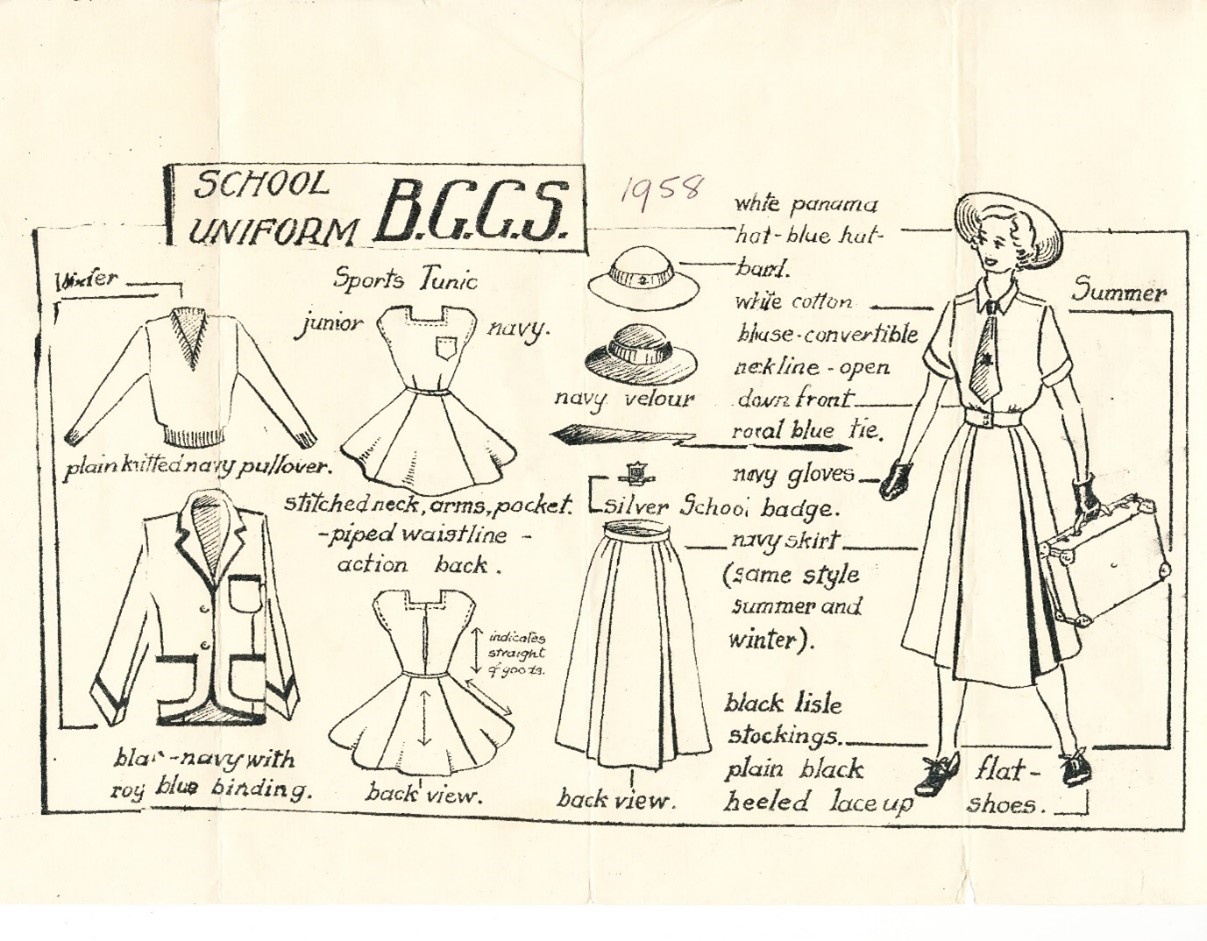
1958 Christine Purvis’s uniform prospectus
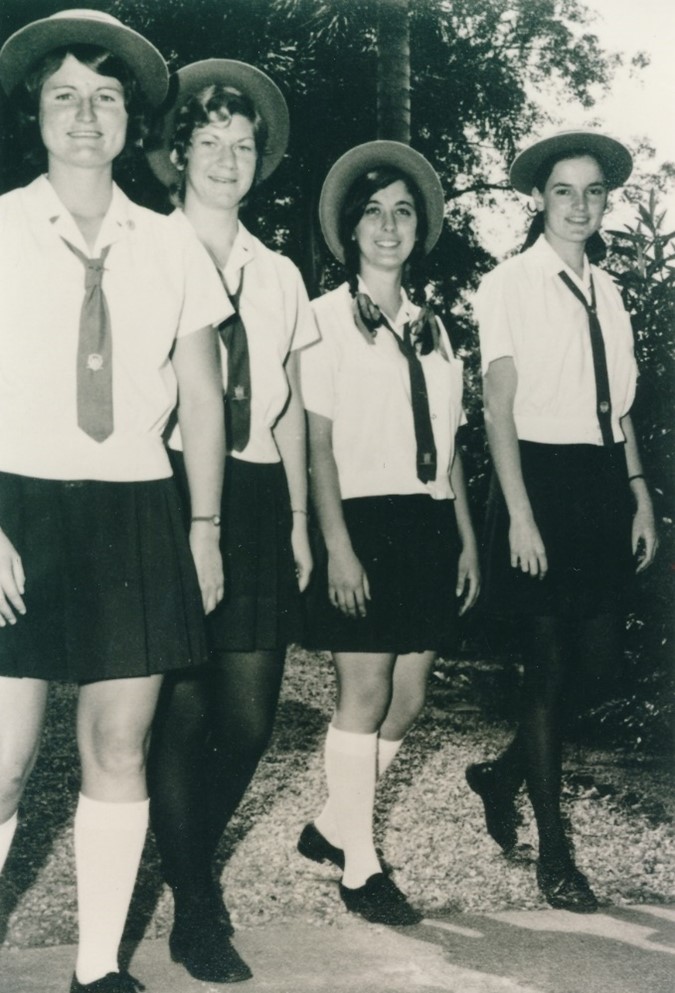
1971 Margaret Marriott, Yvonne Morton, Noelle Baynes, and Caroline Cavaye
Uniforms were now more often purchased as a complete product, rather than homemade with the uniform kit, and purchased through the Parents and Friends Uniform Shop. The dominating style change during the 1980s was the wearing of the tie worn up to the collar in the summer months. In 1985, all formal school photographs were taken with the tie up into the collar, although there were always expressions of independence by some.
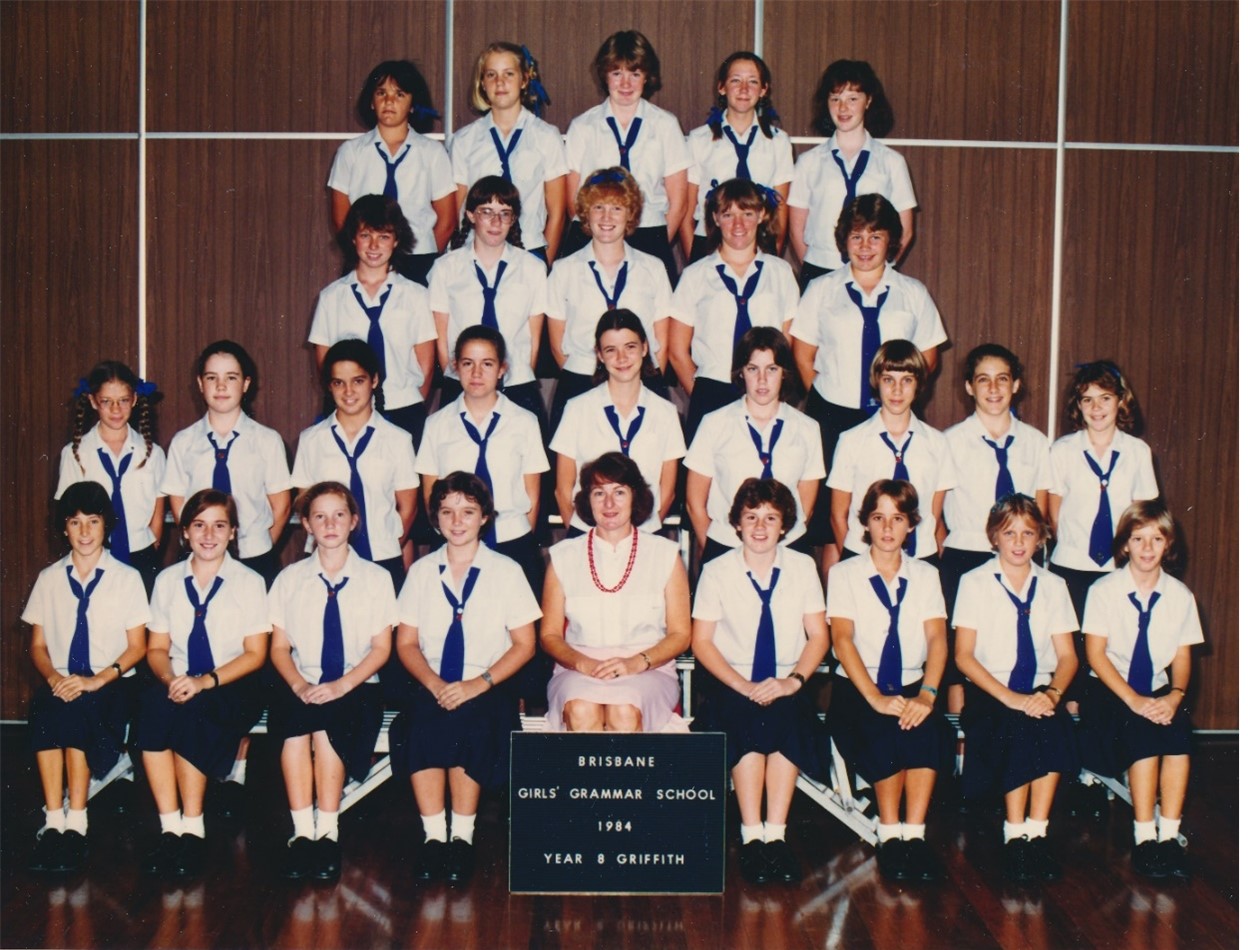
1984 8 Griffith with House Group teacher, Mrs Lin Fairlie
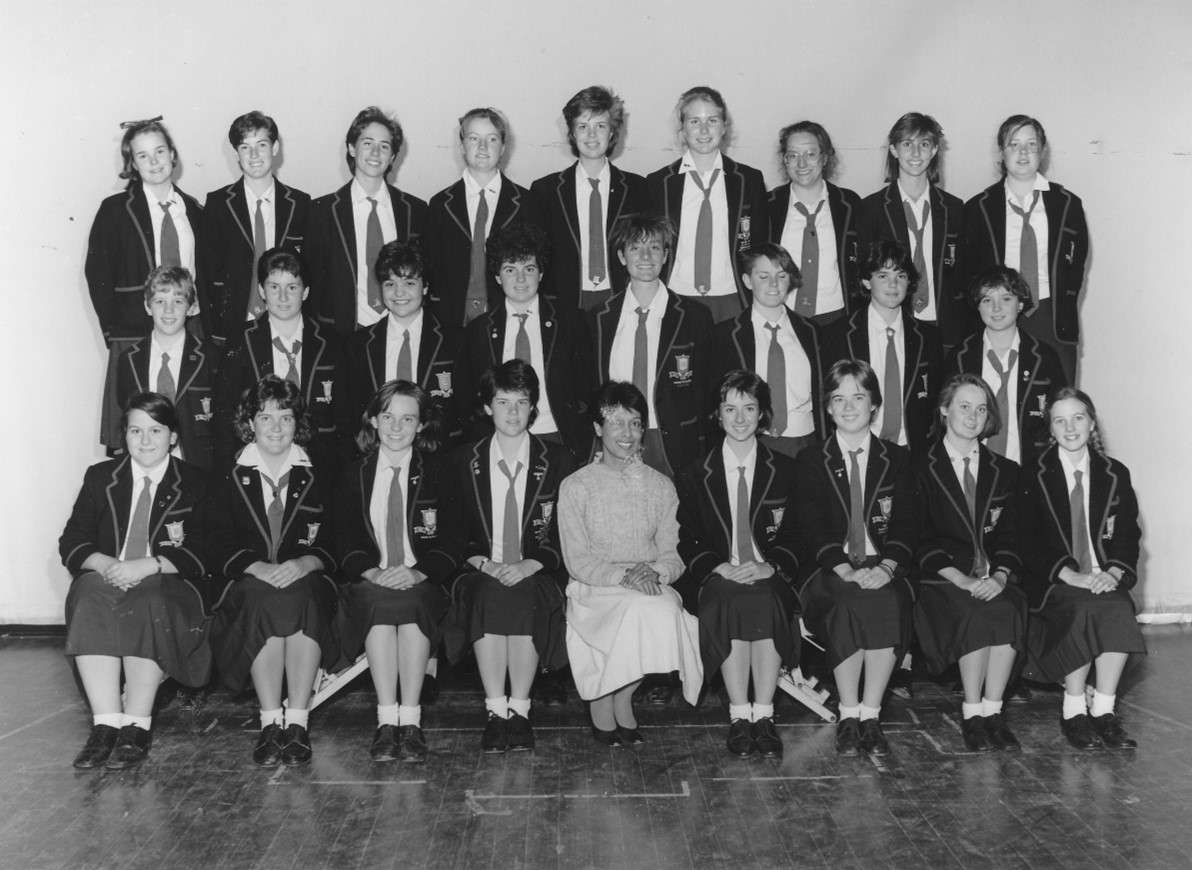
1985 Interact Club
The 1990s saw the blouse lengthen and maintain the looseness of the 80s. Girls expressed their individuality by purchasing different sizes resulting in a longer, roomier blouse or one with a fitted waistband sitting comfortably on the hips.
The most significant change to the blouse came in 2007 when then Principal, Dr Amanda Bell, was unimpressed with the fact that many schools had a similar white blouse and she felt we ‘needed to dress it up a little and also … (make the students) identifiable as Grammar girls around town.’ Therefore, with these ideas as catalysts, and consultation with then Deputy Principals, Felicity Williams and Marise McConaghy, the crested pocket, the central pleat in the back to allow for greater freedom of movement, and the button-on tie were introduced in 2008. Dr Bell ‘… much preferred the crested blouse—(it) just made them a bit more formal and special without being overt.’
Aishlin Greig (2008) remembers the Assembly when it was announced: ‘I do remember the announcement of the new blouse. I believe it was announced on Assembly or at our Year level Assembly and the reason for the change was attributed to a number of incidents being reported of ‘Grammar girls’ not behaving in the city after School … but with a number of similar uniforms from different schools with white blouses, it was hard to really determine whether it was a Grammar girl or not.’
Coupled with the concept of taking the blouse up a notch was how to solve the look of the problematic tie. Sadly, girls were often unfamiliar with the ‘Windsor’ knot and so, frequently, ties portrayed agony rather than ecstasy. Gabriella Avenia (2008) recalls ‘it came in around when I started Grade 12 … I remember this because one of the first times I remember wearing it was when I received my House Captain badge at the Induction Assembly! I remember this as I liked the badge detail on the pocket but also as (the … new) clip-on tie felt just a bit too short proportionally for me, being taller. The buttons under the collar and the clip-on tie were a good feature for me though—my dad had given up trying to teach me to knot my tie—he was still tying it for me until the new ties came in!’
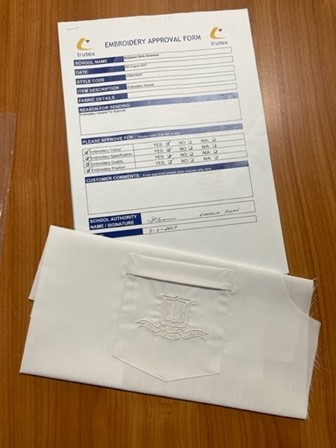
2007 The original sample and approval sheet
However, it is interesting to note that there were two serious attempts to change the Grammar uniform to my recollection—in the mid-1970s when Principal, Miss Nancy Shaw, commissioned Mrs Joy Harvey to design a range of new styles, and in the 1990s, when Principal, Mrs Judith Hancock, requested that Miss Jan O’Sullivan consult with award-winning fashion designer, Daniel Lightfoot, to design a new uniform. On the first occasion, when put to the student vote, the student body chose overwhelmingly to keep the traditional uniform. The second attempt did not get past the discussion phase with the designer, Principal, staff, and Old Girls Association.
The Uniform Shop no longer provides a uniform kit for new families and sewing has become a skill not so frequently practised in the time-poor 21st century. However, it appears the sporty 1922 Vth Form got it right by designing a school uniform, which weathered the passing of time.
Mrs Pauline Harvey-Short
Manager, School History and Culture
References
Avenia, Gabriella email 28.08.2022
Bell, Amanda email 03.08.2022
BGGS Magazine 1923 Editorial
BGGS Magazine 1975 p9
Greig, Aishlin email 28.08.2022
Thompson, Johnette unpublished letter dated 05.12.2021
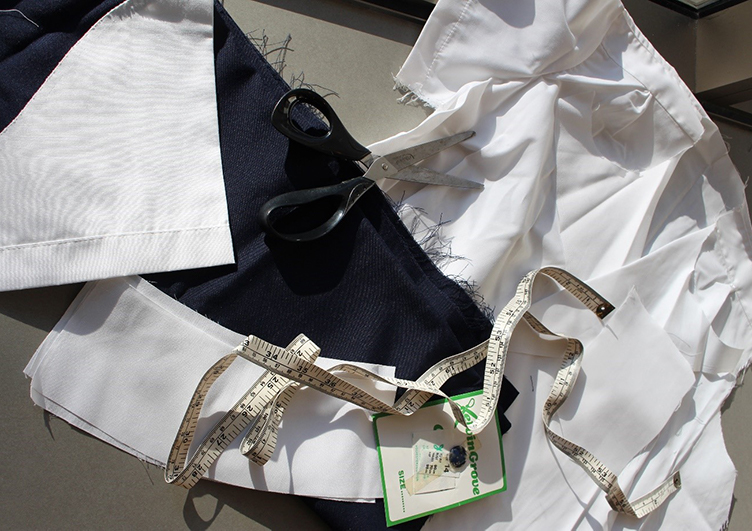
Partially made blouse from Kelvin Grove Clothing Australia
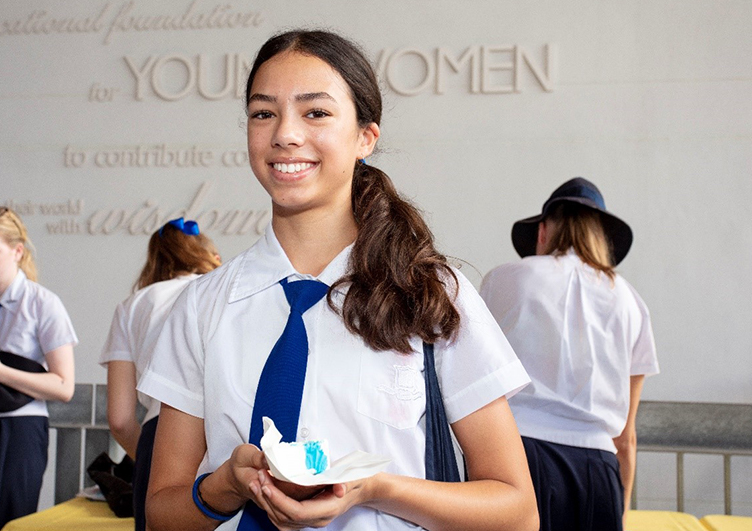
Soraya Prendergast (9W) wears the 2022 blouse. Both front and back can be viewed in this image


